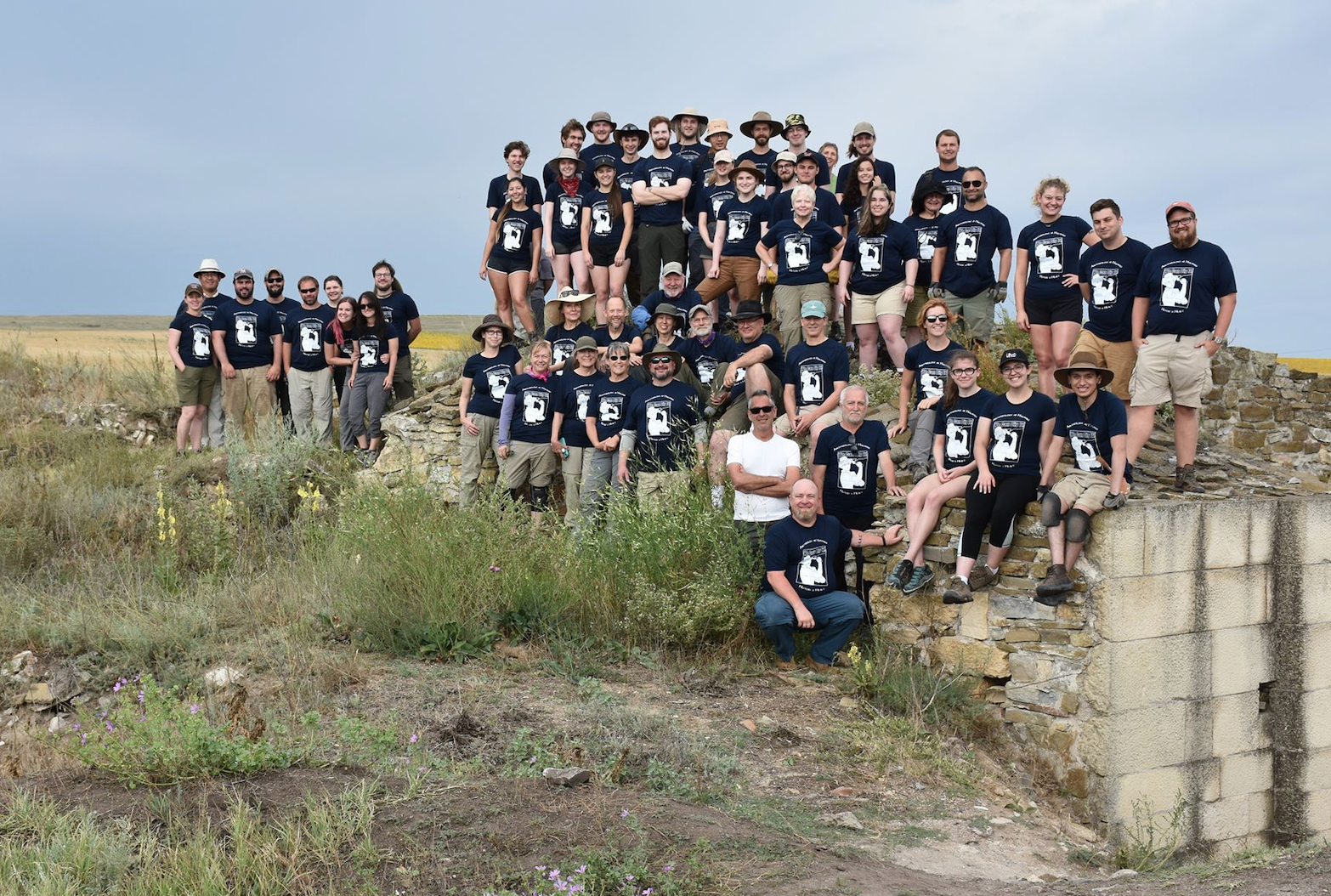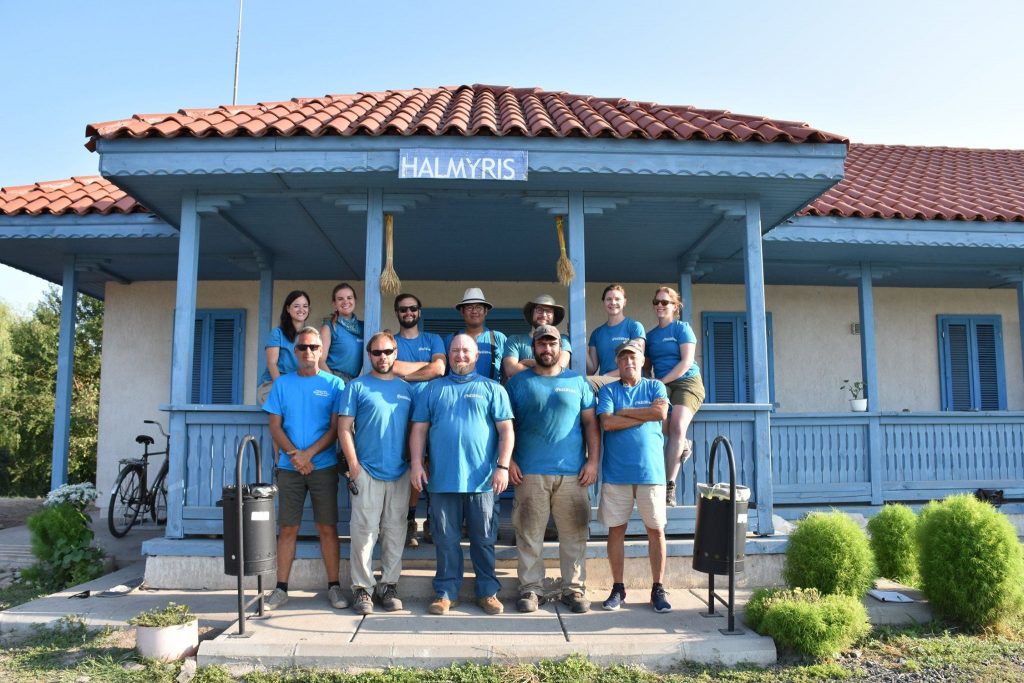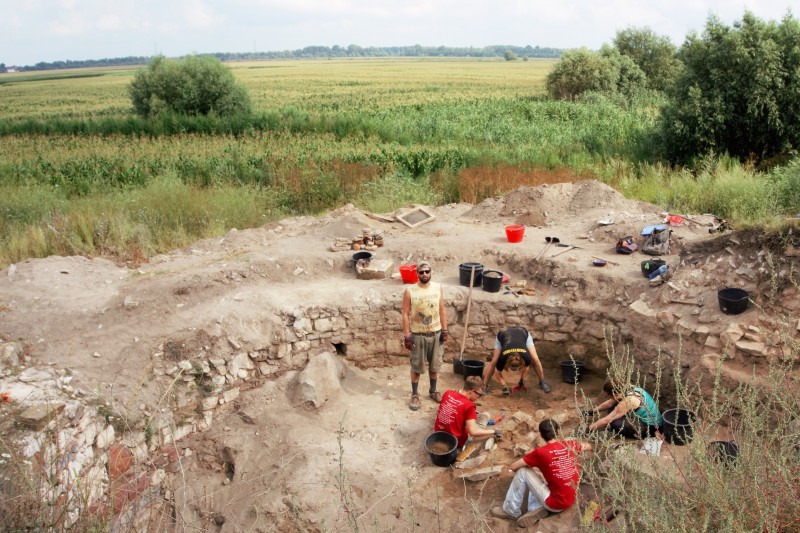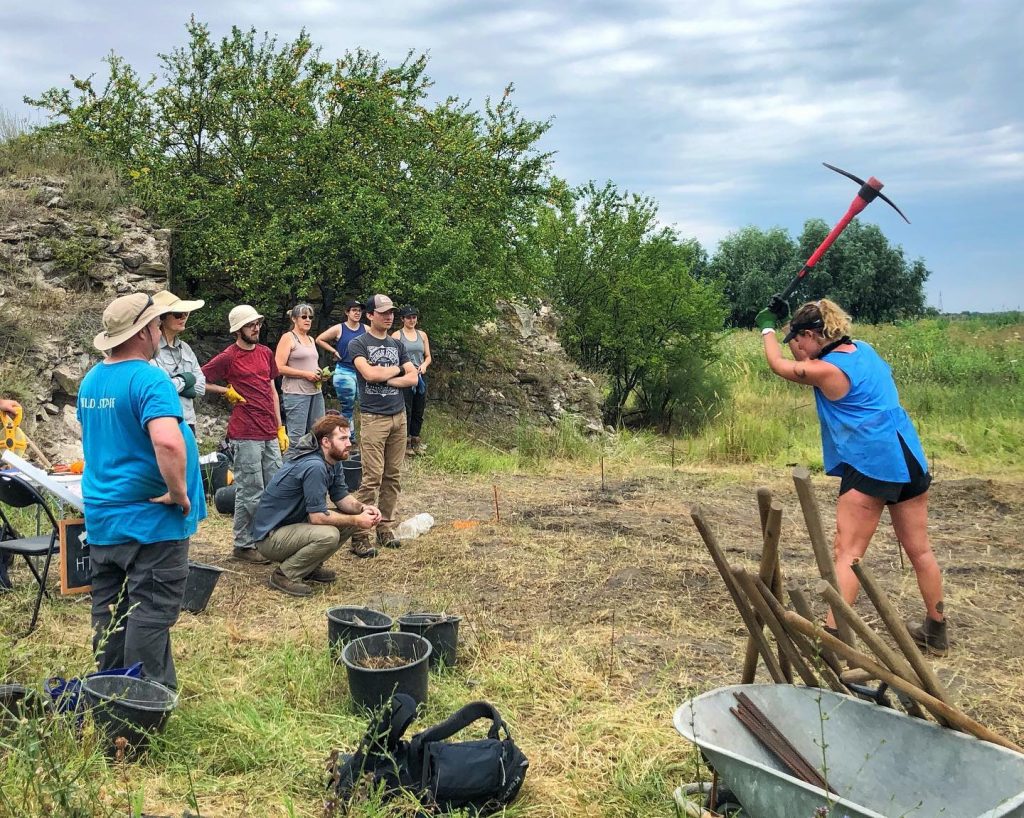Fieldwork
This listing expired on September 1, 2020. Please contact archaeologyathalmyris@gmail.com for any updated information.





Location: Murighiol, TL, RO
Season: June 22, 2020 to July 17, 2020
Session Dates: Volunteers may either attend for all 4 weeks, or for 2 week sessions: 22 June to 3 July (first two weeks) 6 July to 17 July (second two weeks)
Application Deadline: May 1, 2020
Deadline Type: Rolling
Website: http://www.halmyris.org
Program Type:
Volunteer
RPA Certified:
No
Affiliation:
Romanian Institute of Archaeology "Vasile Pârvan"
Project Director:
Professor Mihail Zahariade, Senior Researcher/Former Assistant Director, Vasile Parvan Institute of Archaeology, Bucharest, and Professor John N. Karavas, International Center for Hellenic and Mediterranean Studies (DIKEMES), Athens, Greece
Project Description:
Due to the world-wide concern over the severity of COVID-19, we have made the difficult decision to cancel the 2020 field season at Halmyris. This is for the wellness of not only our staff and volunteers but the community in Murighiol.
Thank you for your understanding, and we look forward to welcoming volunteers to Halmyris once again in 2021. In the meantime, we send our best wishes for safety and wellness to all of our extended archaeology family across the globe.
——————
The Danube Delta began to form out of a bay along the Black Sea over 5000 years ago during the Holocene epoch, and to this day the area along the Sfantul Gheorghe (St. George) branch of the river remains wet and fertile. The Delta still teems with fish and frogs living among the reeds; herons and egrets fill the skies and voice their many opinions from the tops of willow trees, and occasionally wild boars and wolves appear deep within the maze of canals.
Over 2,600 years ago during the 7th century BCE, the Getic tribes that lived along the Lower Danube and the Black Sea started encountering Greeks venturing from their city-states, looking for new lands and trade opportunities. Milesian Greeks founded the colony of Histria in the mid-7th century BCE, as a means of facilitating trade with the Getae in the interior of modern Romania, land which they accessed through the valley formed by the Danube Delta.
Archaeological evidence shows that there were two periods of Getic occupation on the headlands that would become Halmyris, first from the 6th-3rd centuries BCE and then from the 2nd-1st centuries BCE. They left behind the cremated remains of their dead, and it is quite possible the Getae also built a nearby dava or fortified settlement. From the foundation of Histria, the Greeks were also in the area on trading excursions–in the lowest levels at Halmyris, archaeologists found Greek pottery and coins in the same context as Getic arrowheads. The name Halmyris (Ἅλμυρις) is actually Greek, meaning salt water. It is possible, but not yet confirmed, that the Greeks built a trading post at the site to support commerce along the Lower Danube.
With the advent of the new millennium came the expansion of the Roman Empire, recently reformed from a Republic under Caesar Augustus, and eager to expand across the known world. A Roman army under C. Scribonius Curio had advanced as far as the Danube in 75 BCE, and in 28 BCE Marcus Licinius Crassus finished subduing the Getae and incorporated their lands into the imperial province of Macedonia. By the first decade of the 1st century CE the southern half of modern Romania was reorganized into the province of Moesia.
In 30 CE, the Romans gained control of Histria, and by the Flavian Period (69-96 CE) the Lower Danube was a stable frontier line. The province faced continual threats from the Dacian tribes north of the Danube, and in 87 CE the Roman Emperor Domitian split Moesia into two provinces, Moesia Superior and Moesia Inferior, beginning a strong offensive against the Dacians.
Halmyris played an important strategic role in this conflict, as the site holds the easternmost position on the Danube and therefore met all the traffic traveling upriver from the Black Sea. A Roman legionary detachment built a turf and timber fort on the site in the late 1st century CE, including a precinct wall, curtain towers, and gates to support a squadron of the newly established fleet of the province (Classis Flavia Moesica). The Romans called the site Salmorus, which the 5th century text Notitia Dignitatum recorded as Thalamonium.
In 101 CE, the Emperor Trajan came to Moesia Superior to personally oversee an assault against the ongoing Dacian threat, culminating with a costly victory at the battle at Tapae, in the Carpathians. Soon after, the Roman legions I Italica and VI Claudia conducted renovations at Halmyris, replacing the early Flavian building with a much stronger stone construction between 106/107 and 116 CE. By this point, the fort was likely housing a legionary detachment of 400 to 500 men, along with the sailors of the provincial fleet in the mariner’s village or vicus classicorum. Halmyris operated as one of a series of forts on the Lower Danube, interspaced with constructions on the hilltops to assist with visual contact between the military outposts. Other forts include Aegyssus, located were modern Tulcea stands today, Noviodunum at modern Isaccea, and Salsovia at modern Mahmudia.
Throughout the 2nd and 3rd centuries CE, Roman emperors continued to attempt to hold the lands of modern Romania. Aurelian (270-275 CE) abandoned the province of Roman Dacia, located to the north of Moesia Superior, after facing repeated invasions by Germanic tribes. He retreated to the southern banks of the Danube, using the military forts on the river to discourage the barbarians from penetrating further into Roman territory. Subsequently, from 270-285 CE, legionary builders improved the defenses at Halmyris, completing massive repairs to the walls, gates, and defensive towers. This later version of the fort had a trapezoidal shape, with two gates, a monumental entrance, 15 towers, a bathhouse, administrative buildings, barracks, stables, and a surrounding civilian settlement that stretched for kilometers around the fort. By the late 3rd century, Halmyris was not only important militarily, but also economically with a trading post and harbor which oversaw the commerce of the region.
In 290 CE, an event occurred at Halmyris which would significantly impact modern perceptions of the site. Two Christians, Astion and Epictet, traveled to the fort on a proselytizing mission and eventually suffered imprisonment, torture, and martyrdom when they refused to reveal their names to the authorities. After their executing by beheading, the Romans buried them near the site and when Emperor Constantine I converted to Christianity in 312 CE, he ordered them reintered in a crypt under a newly built basilica within the fort. The Church later canonized Astion and Epictet, and today the modern Romanian Orthodox Church holds a yearly pilgrimage to the nearby monastery built in honor of the saints.
From the late 3rd to the early 5th centuries CE, Halmyris faced repeated attacks by barbarians attempting to cross the Danube. Significant assaults occurred in 294, 314, and 384 CE–the later of which was especially severe as the Danube froze, allowing the Goths to walk directly up to the fort walls. In 390 CE, the Huns managed to actually capture and hold Halmyris for a brief period. The Romans, however, recovered the fort in time for another group of Huns to attack and burn the site in 408 CE.
This trend of destruction and reoccupation continued throughout the 5th and 6th centuries CE, and by the early 7th century, Halmyris was in its last days as an occupied Roman legionary fort. Finally, during the reign of Heraclius in the Eastern Roman Empire, the Byzantine troops permanently withdrew to support an ongoing Persian war in the east.
Although the military left, some aspects of life at Halmyris continued–the latest coin found to date at the site is from 612/613 CE. Yet the once imposing walls began to shrink, as locals repurposed the stone for building materials, and the security of the fort was forever compromised when the western gate fell into disrepair. In 681 CE, Constantine IV ceded the provinces of Moesia to the Bulgars after suffering repeated military defeats. Halmyris was now officially part of the first Bulgarian Empire, although there is currently no archaeological evidence suggesting that the Bulgars ever sent a military force to occupy the ruins of the fort. Instead, medieval peasants built huts within the walls that still offered some security, as the sediment brought downstream by the Danube began to cover the harbor and shift the path of the river away to the north. This dirt delivered by the river eventually spread over the site, until only the jagged tops of the towers and walls were visible to those wandering the hills south of the Danube. Hundreds of years later, locals would tell stories about the treasure hidden inside the mysterious walls, and of the spirits that guarded the site. These stories were perhaps vindicated, when Professor M. Zahariade later discovered the remains of the Christian martyrs in a hidden crypt within Halmyris.
Field Season 2020 Introduction
Over the past nine seasons work on the Roman fortress of Halmyris has produced enigmatic material revealing the unique conditions faced by Roman soldiers on the Danube frontier. In 2012 we began excavations in the ancient harbor, located directly below the walls of the fort, and in 2013 we opened five trenches in the fort alongside the walls above the harbor. In 2014 we continued work above the harbor, exploring the intensive 6th century building period in this area of the fort. We also excavated a 6th century defensive tower and dug trenches nearly two meters deep behind the late monumental entrance and tower. The 2015 team continued excavations in these areas; yielding well-preserved architectural features and numerous small finds including coins, weaponry, and ceramics suggesting that, during the Roman occupation, the harbor and the northeastern fort were areas of particularly intense activity. We also discovered the entryway to a previously unexplored defensive tower (Tower 3) in the eastern wall, which was excavated to depths of over two meters in 2016. In 2017 we further explored the area around Tower 3, as well as reopening investigations on Tower 12 of the western side, and additionally began the excavations of Tower 4, which may prove to be the largest tower of Halmyris. 2018 completed the excavation of Tower 12, and proved Tower 4 to be even larger than anticipated with 3 potential entranceways. The 2019 season concentrated on Tower 4 and associated buildings, some additional work on Tower 12, and saw the opening of multiple trenches in the harbor area, trenches that yielded an unprecedented amount of material culture including coins, pottery, and several bronze figurines.
The field season of 2020 will concentrate on multiple promising areas including Tower 4 and the structures of the northeastern fort. We also hope to begin excavating areas of the civilian settlement identified in an ongoing survey project, as well as continue excavations of the harbor. 2020 promises to be a particularly exciting season given the proliferation of material culture discovered during the previous stages of excavation in the harbor and in the area around Tower 4!
Period(s) of Occupation: Hellenistic, Middle Roman, Late Roman, Byzantine
Notes:
A Roman fort on the Lower Danube frontier with over six centuries of occupation, massive amount of archaeological material present, a stunning rural setting in the Danube Delta, extremely affordable introduction into fieldwork or as a means of gaining experience.
Project Size: 50+ participants
Minimum Length of Stay for Volunteers: 2 weeks
Minimum Age: 18
Experience Required: No archaeological experience necessary, but must be in good physical condition and able to work in temperature of 75-100 degrees F.
Room and Board Arrangements:
Cost: Approximately 1200 – 1350 USD for 4 weeks accommodation, meals, transportation, and visits to nearby archaeological sites. 600 – 675 USD for 2 weeks. All except the administration fee is paid on arrival directly to the providers or may be wired/bank transferred over ahead of time – the admin fee is used to pay for the site bus, purchase tools, cover operating expenses, and includes the cost of the dig t-shirt.
Please note that all payments are made directly to the providers in the village and are subject to currency fluctuations based on the price of fuel. We provide a range of prices because the Romanian Lei is known to fluctuate, and it is difficult to estimate more than several months in advance. We are also in a position to cater for all needs, preferences, and pockets—the majority of our accommodation is priced at 75 lei/night, but we also have some places available at lower rates. The majority of our accommodation is shared, but limited single rooms are also available at a higher rate.
Accommodation: All volunteers stay in the village of Murighiol, located 2.5 km from the site and less than a kilometer from the Danube River. Murighiol is a traditional Dobrogean village, and only in the past decade have cars become more common than horses and carts! There are a variety of options for accommodation, all are fully equipped with electricity and hot water, some have air-conditioning, and others have fans and large private bathrooms. There is free WiFi access available regardless of where you stay, but please be aware that in this rural setting speeds can vary.
Food: Volunteers eat three full meals a day at a local restaurant, the Green Delta. Breakfast typically includes bread, sausage, eggs, cheese, and coffee or tea. Lunch starts with either a soup or salad, followed by a main dish. Dinner is a bit lighter than lunch, with a main dish which is sometimes accompanied by fruit or another dessert. Romanian cuisine features cabbage, potatoes, lots of fish and chicken, pork, eggs, tomatoes, and cheese. All are locally grown/farmed and deliciously prepared. It is also possible arrange for alternative diets for vegetarians or vegans. Drinks are typically not included with meals, however, a full range of alcoholic and non-alcoholic are available at very low cost (approx. $2 for a pint).
Dr. Emily Hanscam
Durham University, Dawson Building, Department of Archaeology, South Road
Durham
DH1 3LE
United Kingdom
The AIA is North America's largest and oldest nonprofit organization dedicated to archaeology. The Institute advances awareness, education, fieldwork, preservation, publication, and research of archaeological sites and cultural heritage throughout the world. Your contribution makes a difference.